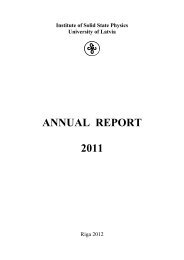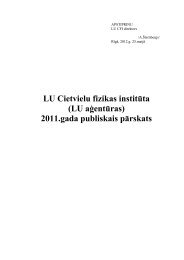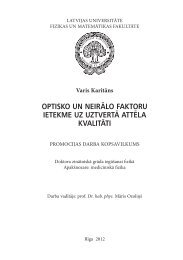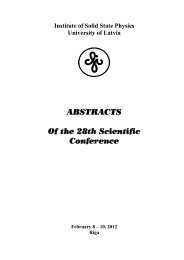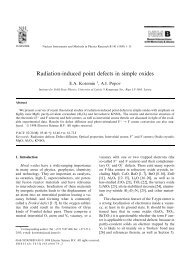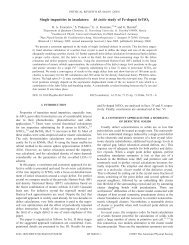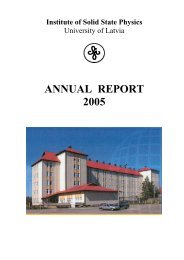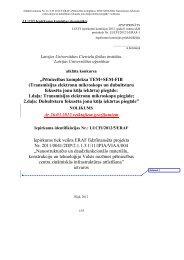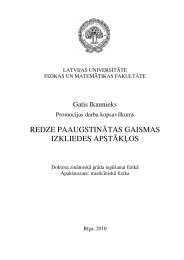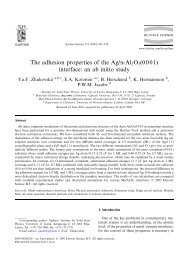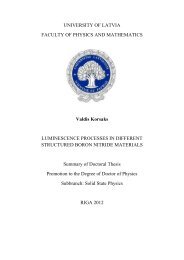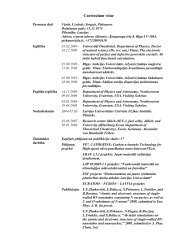Annual Report 2012 - Latvijas Universitātes Cietvielu fizikas institūts
Annual Report 2012 - Latvijas Universitātes Cietvielu fizikas institūts
Annual Report 2012 - Latvijas Universitātes Cietvielu fizikas institūts
You also want an ePaper? Increase the reach of your titles
YUMPU automatically turns print PDFs into web optimized ePapers that Google loves.
Fig. 10. Model of CNT - Me interconnect.<br />
Fig. 11. GNR (polylayered) - Me<br />
interconnect.<br />
We have also developed the concept of simulation of carbon based nanosensor<br />
devices. Interconnect capacitances and impedances have been evaluated in the GHz and<br />
THz regimes. Parametrical numerical simulations of conductivity have been carried out<br />
for zig-zag (m,0), arm-chair (m,m) and chiral (m,n) CNTs while the sensitivity of<br />
conductivity to the local electronic density of states in CNTs with local impurities (N<br />
and B atoms) has checked. CNTs, CNT-Me and GNR-Me based nanostructures are<br />
prospective nanosensor structures. Conductance and other current-voltaic parameters<br />
depend on the morphology of the nearest shells in MW CNTs and PL GNRs, which<br />
results in complications for technological synthesis. Nevertheless, the corresponding<br />
nanodevices possess the stable electrical characteristics.We have made a further step in<br />
simulations directed to nanosensor systems. In this respect, due to the sensitivity of the<br />
local electronic density of states to external influences (mechanical, chemical, electrical,<br />
magnetic, etc), the fundamental electromagnetic properties of CNTs, GNRs and their<br />
metal interconnects have been analyzed from the point of view of prospective<br />
nanosensor applications. We have created the database of CNT-metal and GNR-metal<br />
junction combinations taking into account a set of parameters, and namely, the angle of<br />
chirality, the CNT diameter, the number of walls or layers, the type of a metal substrate<br />
(Me), and the orientation of a metal substrate, e.g., the densely-packed (100), (111) and<br />
(110) surfaces. Thus, we are able to forecast interconnect properties for various SW and<br />
MW CNT, ML and PL GNR configurations.<br />
There are some important applications of CNT- and GNR-based interfaces with other<br />
materials for creation of novel nanosensor devices, e.g., for design of prospective<br />
electron devices like FET-transistors (Fig. 12) which are very sensitive to various<br />
external influences of different nature as mentioned above.<br />
64



